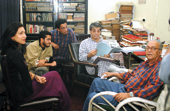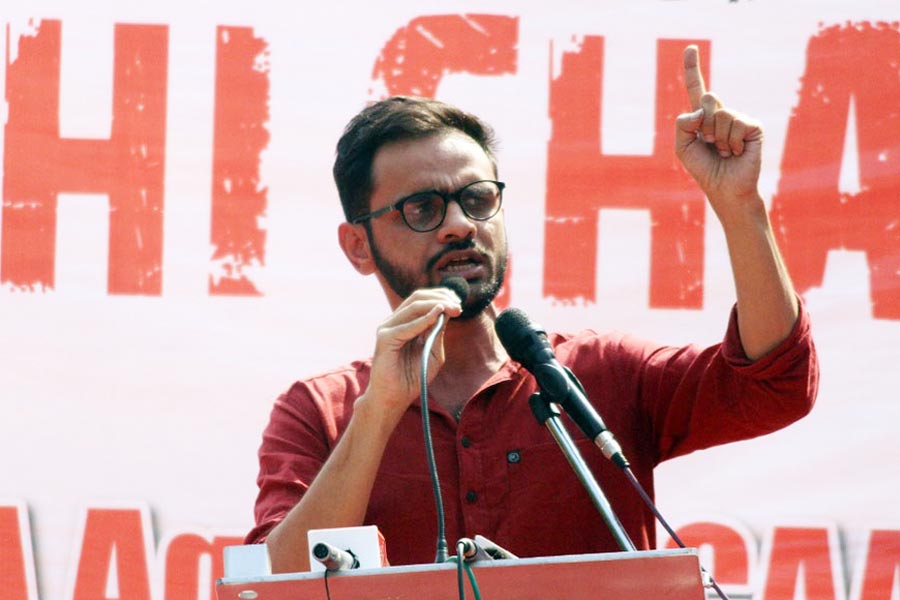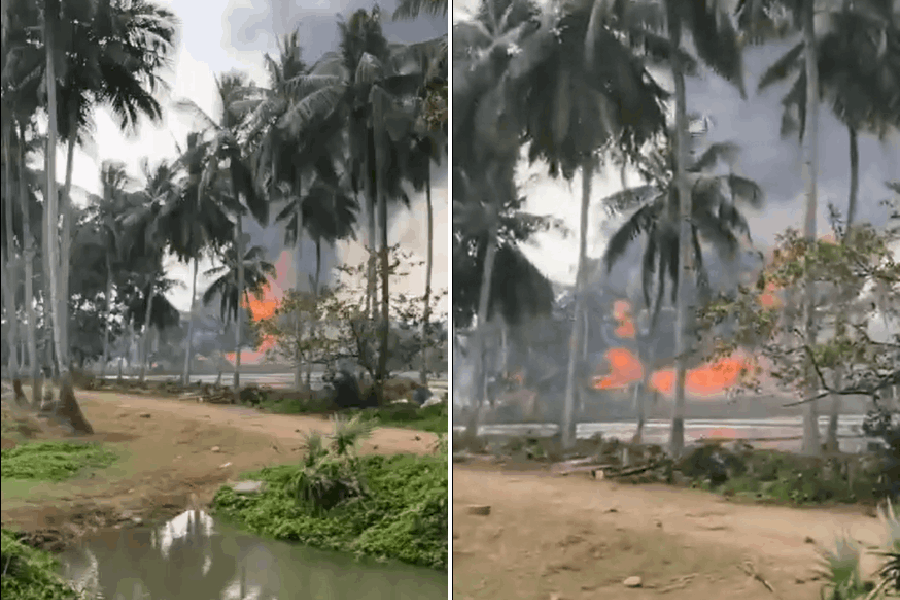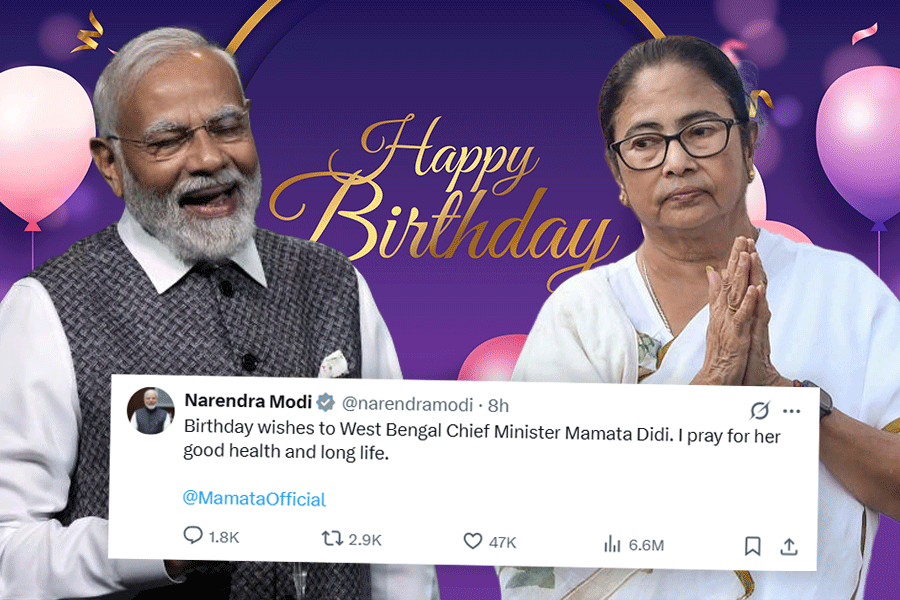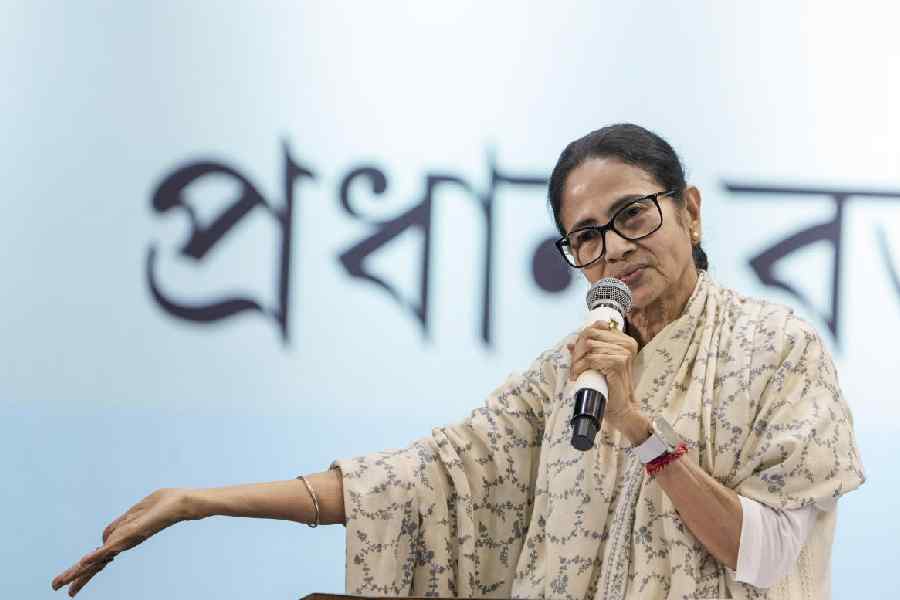 |
| Rituparna Sengupta, Parambrata Chatterjee, Sabyasachi Chakraborty, Sandip Ray and Soumitra Chatterjee at the script-reading session of Nishijapon |
Nishijapon is based on a Narayan Gangopadhyay story that blends emotions with elements of thrill. What does your film focus on?
This is a story of six people stranded in a cottage atop a hill. In the beginning, the house hums with activity, as the family is very warm and affectionate. There?s the owner Soumitra Chatterjee, a retired widower, his elder son Sabyasachi (Chakraborty), younger son Parambrata (Chatterjee), Sabyasachi?s wife Rituparna (Sengupta) and her sister Raima (Sen). That apart, there?s Dipankar De, a tea planter who comes to visit them.
One day the hanging bridge that connects the house with the outer world collapses in a landslide. There?s no power, no water, no food and the close-knit family starts to disintegrate in anguish. The film is about human relationships and the shape they assume in certain trying situations.
Finding such a location must have been really difficult?
We had a very hurried pre-production schedule. In the little time we had, we scoured North Bengal and finally settled on an old British cottage in Kalimpong. The hanging bridge had to be built. We also had to keep in mind the fact that we had a huge unit that needed accommodation. Then, the heavy equipment had to be dragged up. The temperatures were freezing, but shooting was over in 26 days flat. Thereafter, we shot in Rangpo, near the Sikkim border.
How did you decide on this story?
We used to hear a lot of radio plays when we lived in our Lake Temple Road house. That was when I got to listen to a play called Dhwash. Later, I found out it was based on one of Narayan Gangopadhyay?s stories, Nishijapon. I read it and found it very filmable. I was very keen on working on it and so bought the rights to the story around 1994-95. I also wrote a rough draft but nobody was interested in producing the film. Then, at the premiere of Bombaiyer Bombete, I met R.D. Bansal after a long time. The Bansals had produced five of Baba?s (Satyajit Ray) films ? Mahanagar, Charulata, Nayak, Kapurush Mahapurush and Joy Baba Felunath ? and were keen on returning to film production. They liked the script of Nishijapon. It?s a dream project.
The story carries a strong whiff of the Sixties. Have you recaptured that era?
No, the period is present day. So, the body language and the attitudes of the characters have changed. There were lots of Tagore songs in the story. But today?s generation doesn?t break into a Rabindrasangeet every now and then. So I have retained only a couple of songs. My main problem was with the mobile phones as that might have helped them resolve the crisis, in a way. But luckily, you don?t get network in the hilly areas and I have kept it that way.
 |
| A moment from Nishijapon |
There is a dream sequence on cannibalism in Gangopadhyay?s tale. How did you treat that?
I didn?t bring in the aspect of cannibalism because it?s not a disaster film. I wanted to keep it at an intimate level and explore what happens to relationships under duress.
Also, I didn?t want the film to look morbid. And though the characters are stranded, relief is reaching them in two-and-a-half days. So, the transition period is not that huge. But since they are all affluent people, they reveal different shades to their characters when the creature comforts are slowly being denied. It?s mostly indoor drama, so I have tried to keep a lot of mobility in the span of an hour and 45 minutes.
How did the cast come about?
Many people asked me why I was repeating my cast in Bombaiyer Bombete. But then, why not? Of the rest, Rituparna is a tried-and-tested actress of both masala and parallel films. I was a bit apprehensive about Raima but she has given a superb performance. People had warned me against her Bengali accent, but she was just fine and is dubbing for herself.
What is your method of work once you have got the script ready?
First, there?s a general session where I read out the script to all. This I do with some amount of acting. Then I ask the actors to think on those lines and come up with their own inputs, if they have any. On location, I let them do their thing and intervene when necessary. My method of working is like Baba and there?s no waste of time while shooting. My cast knew it was a film where they could act and they went all out.

